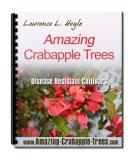Different Soil Types
When you have your own vegetable garden, you will realize just how important soil is in the equation. Without the right type of soil, you will probably not get a healthy crop of vegetables.
The following information on some of the different types of soils will help you to identify the type of soil you have to work with. Remember, all soil types need to have the pH or acidity value tested and then either increased or decreased to match the individual vegetables you plan to grow. Do it once, and then it becomes easier the second time round.
Sandy soil: it has a grainy appearance and flows through your fingers when dry. When the soil is dry and you squeeze a handful, it will not bind together; it falls apart when you release the pressure. When the soil is wet and you squeeze a handful, it forms a cast that crumbles when you touch it.
Loamy soil: this type of soil is a mixture of clay, sand and silt with sand being the predominant characteristic. When the soil is dry and you squeeze a handful, it forms a cast that holds together when touched lightly. When the soil is wet and you squeeze a handful, it forms a cast that holds up when you touch it.
Sandy loam soil: this type of soil is granular with clay, silt and sand mixed together. When the soil is dry and you squeeze a handful, it forms a cast that crumbles when touched. When the soil is wet and you squeeze a handful, it forms a cast that holds up to a light touch.
Silt loam soil: this type of soil has finer grades of sand and half the amount of clay with over half the particles made up of silt. The soil when dry looks cloddy, but breaks easily. When the soil is dry and you squeeze a handful, it forms a cast that you can touch freely. Smash it up and it will look like flour. When the soil is wet and you squeeze a handful, it forms a cast that holds up well. Wet soil runs together to form puddles.
Silt soil: this type of soil is made up of 80 percent silt and very little clay and sand. The soil when dry looks cloddy, but breaks easily. When the soil is dry and you squeeze a handful, it forms a cast that you can touch freely. Smash it up and it will look like flour. When the soil is wet and you squeeze a handful, it forms a cast that holds up well. Wet soils will quickly run together and form a puddle.
Have A Great Story About This Topic?
Do you have a great story about this? Share it!
Order Your New Landscape Design Today!
Always Design Before You Plant!
Click The Above Link To Get Your Dream Design Started Now!

Privacy Disclaimer About Contact This Site Built: Solo Build It
Copyright © 2003 - 2023 by Web-Landscape-Design-Ideas.com.
All rights reserved.


